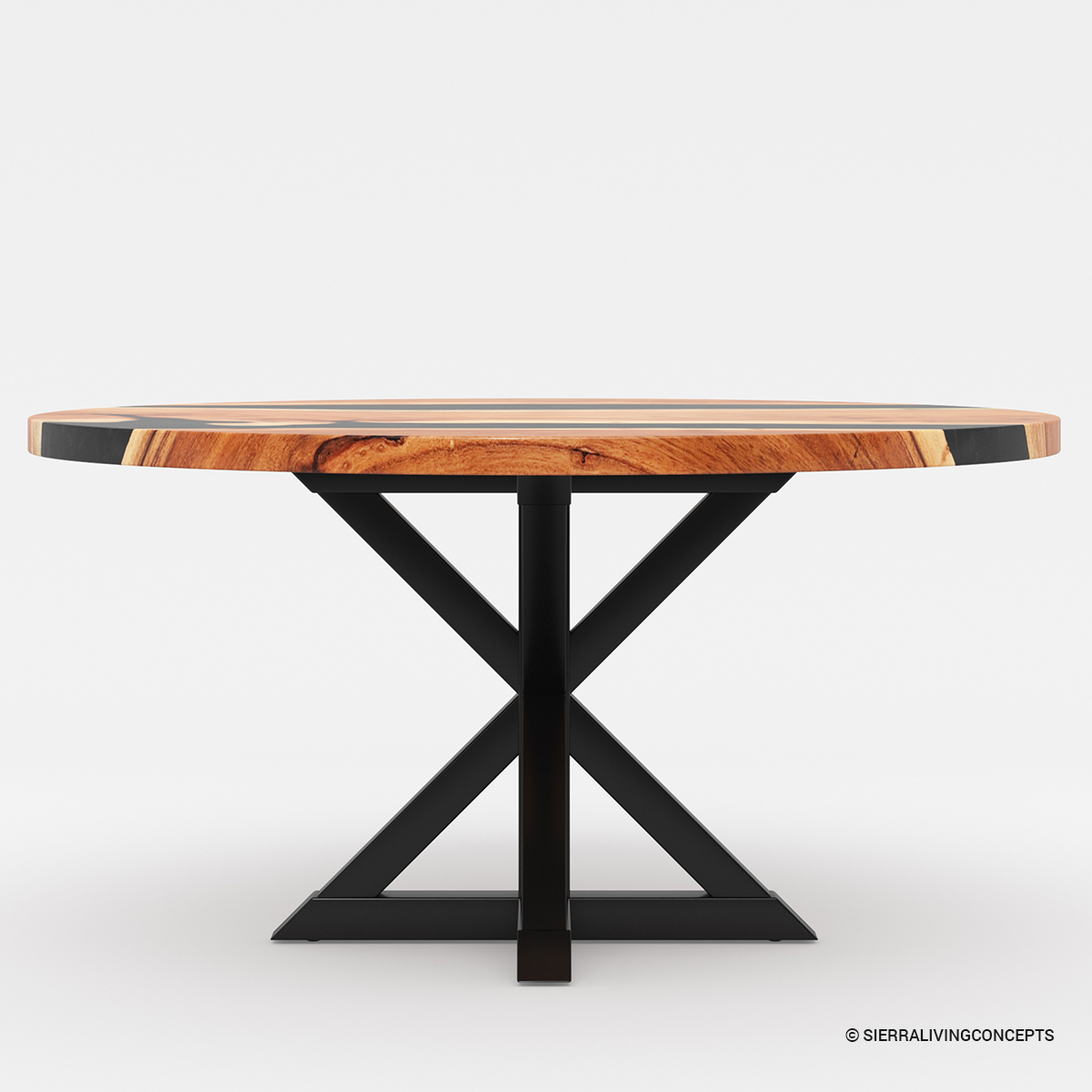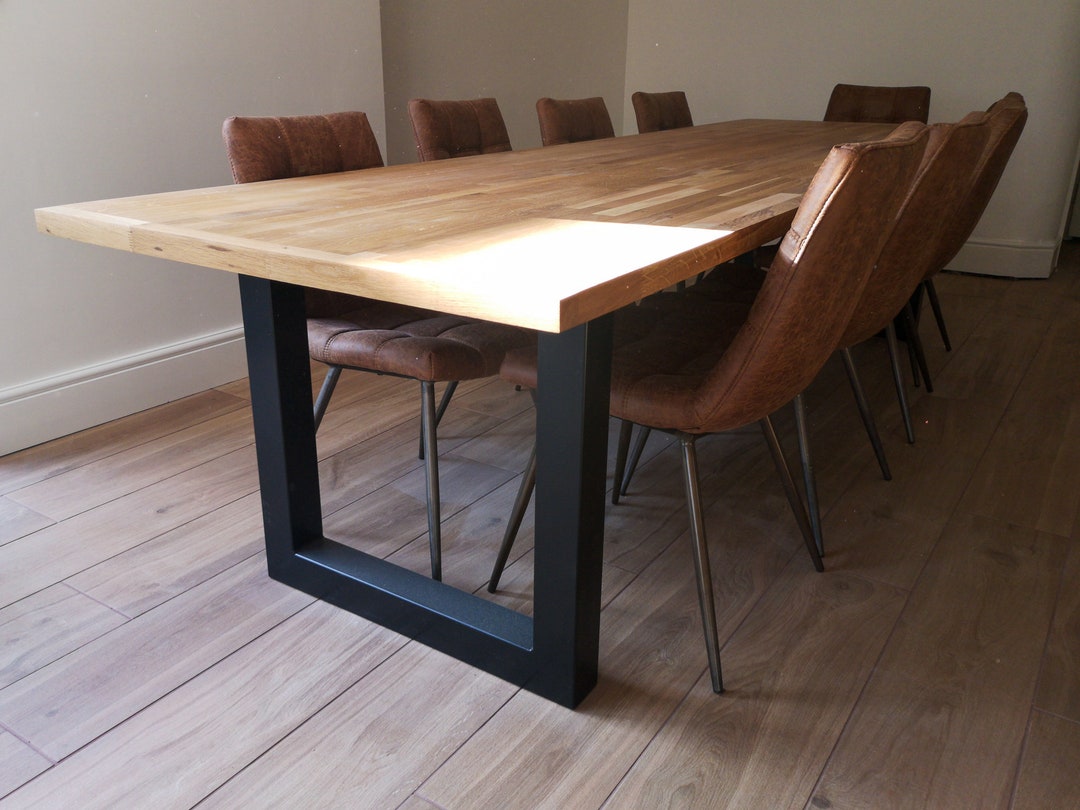From Traditional to Modern: Locate the Perfect Eating Space Table Legs for Your Design
While traditional designs such as cabriole and transformed legs stimulate a sense of timeless class, modern styles like barrette and geometric options offer a possibility for striking visual interest. As you think about these elements, the inquiry continues to be: just how can you effortlessly integrate these varied leg designs to create an unified eating experience?
Recognizing Table Leg Styles
The range of dining-room table leg designs can considerably affect both the visual appeals and performance of the room. Each leg style contributes special practical features and visual elements, accommodating diverse layout choices and usage needs. Recognizing these designs is important for choosing the ideal table that lines up with your general interior decoration vision.
For instance, tapered legs offer a tidy, timeless appearance that can improve a space's sophistication, while stand bases provide stability and maximize legroom, making them ideal for smaller spaces. Hairpin legs, a trademark of mid-century contemporary style, present a commercial style, permitting an airy, open feeling. Trestle legs evoke rustic beauty, giving durable support and a sense of eternity.
In addition, the selection of products plays a considerable function. Wooden legs can bring heat and appearance, whereas metal choices typically communicate a smooth, contemporary vibe. Inevitably, understanding table leg designs is necessary for developing a cohesive dining location that shows personal design while ensuring usefulness and comfort. By thoughtfully considering these components, you can enhance both the practical and aesthetic appeal of your eating space.
Conventional Table Leg Options
When picking dining-room table legs, typical options commonly symbolize timeless style and workmanship. These designs show a rich heritage and a dedication to quality, making them ideal for those that appreciate timeless appearances.
One of one of the most legendary standard leg styles is the cabriole leg, identified by its graceful bent shape. This style frequently includes decorative carvings and is most typically located in Queen Anne and Chippendale furniture. One more preferred option is the transformed leg, which flaunts a collection of smooth, rounded shapes that supply a classic look while keeping security.
In addition, the straight leg, while simple, uses a basic and sturdy structure that can blend perfectly with a range of tabletop designs. For those drawn to ornate outlining, claw-and-ball feet legs evoke a sense of magnificence and can function as a magnificent prime focus in any kind of eating room.
Last but not least, stand bases, although not strictly legs, supply an alternative conventional option that permits for ample legroom and can be perfectly sculpted. Each of these typical leg designs adds to the total setting of a dining room, weding feature with aesthetic appeal.

Modern Table Leg Layouts
Modern table leg styles provide a varied variety of styles that highlight innovative products and clean lines. These layouts commonly prioritize capability while functioning as striking prime focus within an eating space. Minimal looks are common, with legs crafted from materials such as metal, glass, and crafted wood, which add to a contemporary and ventilated feel.
One preferred style is the barrette leg, defined by its slender, conical structure that gives stability without overwhelming the tabletop (dining room table legs). This design is typically found in mid-century contemporary furniture and can easily match various eating table shapes. An additional trend is using geometric forms, where legs may tackle unbalanced or angular types, adding visual rate of interest and a touch of virtuosity

Blending Styles for Unique Areas
Commonly, house owners look for to develop distinct dining spaces that show their personal style by blending various design elements. This approach enables the incorporation of diverse aesthetic appeals, causing an unified yet unique environment. Pairing a rustic wood table with smooth, modern steel legs can produce an attractive comparison that boosts the space's overall allure.
Furthermore, integrating vintage table legs with modern tabletops can stimulate a sense of history while preserving a contemporary sensibility. Such mixes not just showcase individual preference yet additionally motivate creativity, permitting house owners to curate a space that really feels both personal and welcoming.
Color about his plays a crucial function in this mixing process; picking table legs that match or comparison with the existing color system can enhance aesthetic interest. Whitewashed legs can soften the boldness of a dark this contact form table surface area, creating a balanced visual.
Tips for Choosing the Right Legs
Choosing the right table legs is crucial for accomplishing both capability and aesthetic charm in your eating space. Begin by thinking about the total design of your space. Standard setups take advantage of legs that feature complex makings or turned styles, while modern rooms might call for smooth, minimal designs.
Next, evaluate the height and security of the legs. dining room table legs. Standard table vary in between 28 to 30 inches in elevation, so ensure the legs match this dimension for convenience. In addition, durable products, such as hardwood or metal, can enhance security and long life
Review the leg form as well-- options include directly, tapered, or stand designs. Straight legs provide a timeless appearance, while conical legs can include a touch of beauty. Pedestal bases supply adequate legroom and are ideal for smaller spaces.
Conclusion
In recap, picking the excellent eating space table legs needs careful factor to consider of both typical and contemporary designs. By integrating leg design, height, and product with the total decoration, a cohesive and inviting ambience can be accomplished.
The range of dining space table leg styles can significantly affect both the visual appeals and capability of the area. Ultimately, understanding table leg designs is necessary for producing a cohesive dining location that shows individual style while making sure practicality and convenience.One of the most famous conventional leg designs you could try this out is the cabriole leg, characterized by its elegant rounded form. Straight legs use a classic appearance, while conical legs can add a touch of style.In recap, choosing the optimal eating space table legs needs careful factor to consider of both traditional and modern-day designs.